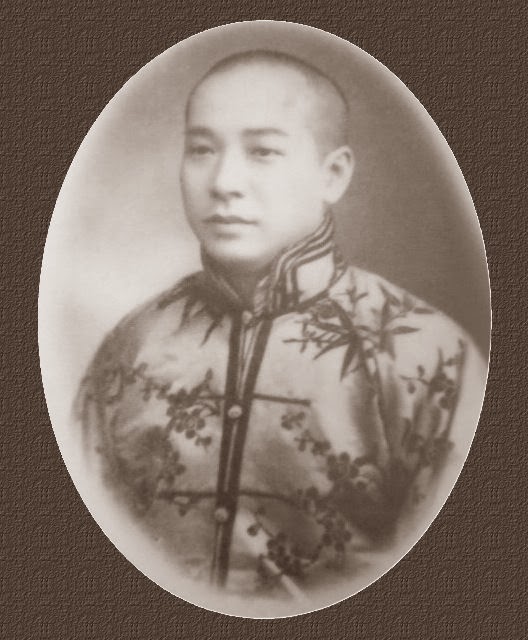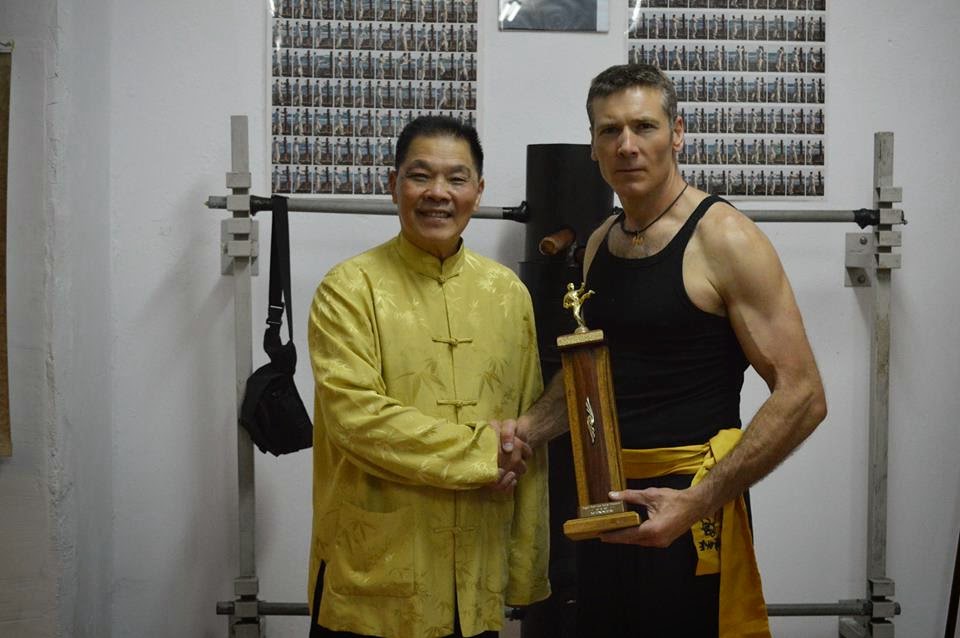As with most of the fighting arts Wing Chun employs kicking techniques as an important part of it’s weapons arsenal. However, there are some important and significant differences between the kicking methods of Wing Chun and the many other arts. These differences set Wing Chun’s kicking skills apart, making them a distinct tool within the system. We will list and discuss five key aspects of Wing Chun’s kicking methodology in order to generate a deeper understanding into this unique fighting system.
1. Kicking Seeds
It has been said by some that Wing Chun only has one punch and three kicks. Although this is not completely accurate it is easy to understand how some people may have developed such an opinion. Wing Chun does rely heavily upon the Sun punch, but it also possesses other punching techniques like the lifting punch and the hooking punch found in the second and third boxing forms. The perception that Wing Chun only has three kicks is also inaccurate; it comes from a limited understanding of the three foundation or "seed" kicking techniques within the system. These three kicks are NOT the only kicks Wing Chun employees, but rather are the basis upon which all of the Wing Chun kicking motions are built. These three seed kicks are: front kick, side kick, and round kick. Each of these techniques are basic to any martial system that employs kicking. They are not unique by any means. However, Wing Chun uses the distinct body alignment and motions of these three kicks as building blocks from which to create an unlimited variety of potential kicking techniques. Let me illustrate.
The basic front kick requires that you face your opponent, lift your kicking leg at the knee, and thrust the ball or sole of your foot straight out striking your target with a straight front kick. There is nothing special about that. Now let us look at the round kick. The round or hooking kick can be thrown from any body alignment with your opponent. You can be facing him, standing sideways to him, or even have your back to him and you can still deliver an effective round kick. Depending on what part of the foot you are using to strike with a round kick may look like a different technique each time. A spinning heal kick is a round kick, it comes in a curved line of attack rather than a straight line like a front kick. A crescent kick is also a round kick, in fact all kicks are either straight or round in their line of attack. In Wing Chun all kicks that arc or curve into the target are considered round kicks. Now if you combine the round kick principle of arcing in with the simple front kick we get some interesting, and somewhat unique kicking techniques. One example of this is the Wing Chun "facade" kick often seen towards the end of the Chum Kil boxing form. The facade kick is a front kick that arcs to the outside as the body turns to face the target. You strike with the sole of the foot with a straight thrusting motion, but the line of attack is definitely an arc. So by combining the three simple kicking seeds Wing Chun can create many possible kicking techniques.
2. Kicking Principles
In combining the three seeds Wing Chun takes the principles of alignment, motion, and striking area represented by the three seed kicks and recombines them to create any number of different kicking techniques. Remember Wing Chun is a principle based system, not a technique based system. Therefore, we have an endless variety of techniques we can use, so long as they conform to correct kicking principles. Those correct kicking principles are represented within the three kicking seeds. These principles include lifting, thrusting, stomping, straight line and circular motions. The alignment principles of facing and standing sideways to your opponent, or turning towards or away from your opponent are also represented. The weapons or striking areas of the sole, heel, and top of the foot are clearly illustrated. But the seeds also include the side of the foot, the toes, the ball, back of the heel, inside of the foot, the shin, the knee etc. The striking area used depends upon you alignment with your target and the principles of motion used to get your foot onto that target. Once those have been determined it is simple logic that determines which striking area or weapon will be used to make contact with the target. Other general Wing Chun principles also apply to correct kicking. Principles of economy in motion or closest weapon to closest target will often be illustrated in the kicks used. Also principles of continuous attacking will show up as Wing Chun fires off multiple kicks instead of only one or two.
3. Soft, Internal Kicking Power
Principles of sticking, and using motion are also heavily relied upon to help the Wing Chun practitioner determine which seed principles will best respond to the current situation. To be able to utilize the characteristic Wing Chun sticking skills one will need to learn to kick with a very relaxed leg. The principle of relaxation is inseparable from the skills of flowing and feeling. Here Wing Chun is different from many kicking systems in that most systems use strength and tension in the leg to generate great power. Wing Chun however, must remain soft and relaxed while kicking so as to feel and flow effectively. Therefore the Wing Chun kick releases soft internal power through the leg rather than kicking with physical strength. The power of Wing Chun kicks come from the correct releasing of chi through the limb, just as the power of the hand strikes use the release of energy through the hand to damage the opponent internally. It would be incongruent for Wing Chun to emphasize soft-relaxed motions with the hands and arm strikes, but then employ hard, tense motions with the legs and feet! That does not make sense, and does not work. As an internal system the whole of Wing Chun is soft and filled with energy. That includes the kicks. When practiced correctly the soft, fast kicking motions of Wing Chun are extremely powerful. The student must learn how to relax and release energy through the legs, just as he did with his arms. However, with the legs there is a great deal more mass to relax, so to some it is easier to just kick the tense, hard way. This is a grave mistake as it will not only result in damage to the kickers legs in time, but effectively isolates him from the important rooting energy skills that give stability and power to the rest of his art. A tense Wing Chun kicker essential stops doing Wing Chun when he kicks. He is employing two completely different systems of attacking and generating power. In doing so he will use neither of them fully or effectively.
4. Kicking Targets
The most vulnerable target on a high kicker is his supporting leg. It is wide open, he can’t move it while his other leg is waving around in the air, and his knee is the most commonly, and easily injured joint in his body. A short fast snapping kick to this target will finish the fight instantly! Wing Chun works to both attack and defend the lower gates with the legs. We stand on the rear leg leaving the front leg to float, freeing it to attack and defend the lower areas with the same ease as the hands have to attack and defend the higher gates. By skillful application of the sticking principles learned within the chi gerk practice the student can flow with and defeat the kicking techniques of his attacker. There are many effective targets to strike on the legs, and because many fighters put weight on the forward leg they are unable to move to defend these open targets. Wing Chun employees the one legged stance so that our forward leg is free to attack and defend with comparable speed to that of the hands. Some may feel that using the closest weapon to attack a target sounds fine with regards to being economical, but sacrifices the devastating power that kicks can generate. This criticism is valid for those using tension weight, and strength to generate power. But Wing Chun does not generate power in this way. Wing Chun’s short power has been well illustrated in the one-inch punch. The same explosive short power can be generated with the Wing Chun kicks. We do not sacrifice power for speed and economy.
The defense of the lower gates also employs the principles in the three kicking seeds. The chamber positions for the front and side kicks make up the basis of the Wing Chun leg defense techniques. These blocking or parrying skills with the lead leg are learned in the chi gerk training. By keeping either the foot or knee on the centerline the Wing Chun kicker learns to control his attackers legs and can devastate them with repeated chain kicking techniques.
5. Kicking as Stepping
A final significant distinction between most kicking arts and the kicking methodology of Wing Chun is that Wing Chun uses the kick as a step. This is well illustrated in the Chum Ku boxing form and on the Wooden dummy. In Wing Chun you do not kick then retract your leg, rather you kick then step down and advance forward. The kick is part of the step. We seldom will stand in one place and throw kicks. Wing Chun prefers to press in on the opponent, and when kicking that means advancing with each kick. To do this the foot is put down on the ground where it strikes the target. It is not retracted and put back where it started from. In advanced kicking skills one can step after the kick without putting the leg down, thus enabling them to chain kick while still stepping forward. This skill requires strong presencing and use of energy in both the kicking and standing legs. Conclusion The kicking skills of Wing Chun are often understated and under utilized. Most students work so long and hard at developing the intricate feeling skills with the hands that when they get to kicking they gloss over this training. The truth is the kicking skills of Wing Chun are as equally complex and sophisticated as the hand skills. If students would devote equal time and effort to training the legs as they do to their hands Wing Chun would probably become better known for its devastating leg skills! But the truth is that the legs tire easily, they are heavy and difficult to work with, and we have not learned to feel as well with them as we do with our arms. Because of these reasons most students do not give the legs the training time needed to truly develop the deep kicking skills of Wing Chun.




.jpg)















